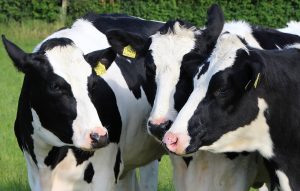
As dairy farmers commence their preparation for the spring-calving season and the lactation that lays ahead, they will also be setting themselves targets.
Some farmers may be setting production goals, i.e. reaching a certain level of milk solids or litres/cow.
Others may be looking to grow and utilise a certain amount of grass on their farms this year.
Mastitis
On many farms, as the new veterinary medicines regulations come into effect, farmers will be looking to reduce cell counts and mastitis cases.
Mastitis is an issue on many dairy farms that can have an economic impact in a number of ways:
- Unrealised milk production;
- Treatment costs;
- Increased risk of culling;
- Discarded milk production.
Some bacteria that commonly cause mastitis are: Escherichia coli (commonly known as E. coli); Staphylococcus aureus; Streptococcus uberis; and Streptococcus agalactiae.
Reducing cases
Several factors should be considered when looking to reduce mastitis cases on your farm.
Cows should be housed and milked in a clean environment. Cubicles should be limed daily to reduce the presence of bacteria.
You should always check the cubicle and bedding areas to ensure that they are dry, and that there are no leaks entering the building. If these areas are wet, they will aid bacteria growth.
Good milking practices are a must in order to reduce mastitis cases. The cows should be entering the milking parlour fairly clean and stress free. And, as all farmers know, the milking machine and parlour must be cleaned to a high level after each milking.
The collecting yard and exit area should be kept clean too as there are areas where cases of environmental mastitis may be picked up.
During milking, you should be wearing gloves and a clean apron. You should only use paper towels to clean teats if needed, and one piece of paper towel should be used for each cow.
The use of a post-milking teat spray is also an important step in reducing mastitis cases.
These are only some of the possible measures you could take to reduce mastitis cases within your herd.
Milk recording
All cases of mastitis should be recorded and cows that continue to develop mastitis should be considered for culling.
If cell counts are an issue on your farm, milk recording should be used to identify high somatic cell count (SCC) cows.
These cows can then either be treated or culled, depending on what is causing the high SCC.
Milk recording is also an extremely useful tool for taking cell counts of cows over a period of time, which gives you are clearer picture of problem cows.




















